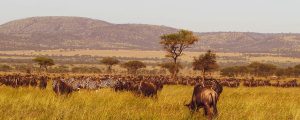Comparing Selous Game Reserve and Serengeti: A Wildlife Safari Analysis
When it comes to embarking on a wildlife safari in Tanzania, two of the most popular destinations that often come to mind are the Selous Game Reserve and Serengeti National Park. Both locations offer unique and unforgettable experiences for safari enthusiasts, but they each have their own distinct characteristics that set them apart. In this article, we will delve into the differences between the Selous Game Reserve and Serengeti National Park, focusing on wildlife viewing opportunities and ecosystems.
Overview of Selous Game Reserve and Serengeti National Park
Selous Game Reserve, located in southern Tanzania, is one of the largest game reserves in Africa. It is renowned for its diverse wildlife and pristine wilderness, offering visitors a chance to see a wide range of animals in their natural habitat. The reserve is named after Frederick Selous, a British explorer and conservationist, and is known for its large population of elephants, as well as a variety of other species such as lions, leopards, and hippos.
On the other hand, Serengeti National Park, located in northern Tanzania, is famous for its annual wildebeest migration, where millions of wildebeest, zebras, and gazelles move across the plains in search of greener pastures. The park is also home to the "Big Five" – lions, elephants, rhinos, leopards, and buffaloes – as well as a plethora of other wildlife species. Serengeti is a UNESCO World Heritage Site and is known for its vast grasslands and acacia woodlands, providing a stunning backdrop for wildlife viewing.
Differences in Wildlife Viewing Opportunities and Ecosystems
While both the Selous Game Reserve and Serengeti National Park offer incredible wildlife viewing opportunities, they each have their own unique ecosystems that cater to different species of animals. Selous Game Reserve is predominantly made up of miombo woodlands and grasslands, providing a diverse habitat for a variety of wildlife. The Rufiji River flows through the reserve, offering opportunities for boat safaris to spot hippos, crocodiles, and water birds.
On the other hand, Serengeti National Park is characterized by vast open plains, rocky outcrops, and acacia woodlands, making it an ideal habitat for a wide range of wildlife species. The park is best known for its annual wildebeest migration, where visitors can witness the dramatic spectacle of thousands of animals crossing the Mara River in search of fresh grazing grounds. Serengeti is also home to a high concentration of predators, making it a prime location for spotting lions, leopards, and cheetahs in action.
In conclusion, both the Selous Game Reserve and Serengeti National Park offer unique and unforgettable wildlife safari experiences in Tanzania. Whether you are interested in exploring diverse ecosystems teeming with wildlife or witnessing the spectacle of the wildebeest migration, these two destinations have something for every safari enthusiast. For booking inquiries and to embark on a safari with Sunset Africa Safari, please contact info@sunsetafricasafari.com.


